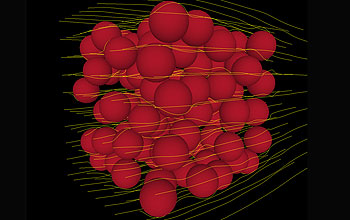|

Press Release 08-211
National Science Foundation Assistant Director for Geosciences to Address American Geophysical Union Conference

Geosciences at NSF: opportunities, approaches, partnerships, plans
December 10, 2008
Geosciences at the National Science Foundation (NSF)--opportunities, approaches, partnerships and plans--will be discussed at the fall meeting of the American Geophysical Union (AGU) on Tuesday, Dec. 16, 2008. The conference takes place from December 15-19, 2008, at the Moscone Conference Center in San Francisco, Calif. NSF Assistant Director for Geosciences Tim Killeen will talk about current and future directions for NSF's Geosciences Directorate (GEO), which has worked with community leaders over the past year to develop and refine a strategic vision for the next decade. "GEO's three divisions--Atmospheric Sciences, Earth Sciences and Ocean Sciences--along with a complement of education and outreach programs, map extremely well into the scientific and educational interests of AGU's membership," said Killeen. "NSF/GEO plays a special role for the AGU community through its long-term commitment to the many programs that support basic disciplinary and interdisciplinary research and education in the geosciences." GEO also plays a leading role in the development of strong inter-agency, intra-agency and international partnerships that further support geosciences research, said Killeen. During the next ten years, significant new geosciences facilities and capabilities will transform the field. Killeen's presentation will highlight the opportunities ahead, and will place GEO in the context of exciting ongoing research and important demographic and other trends. His talk is on Tuesday, Dec. 16, 2008, at 4:15 p.m. Pacific Standard Time (PST) in the Moscone Center, Room 2007.
-NSF-

Media Contacts
Cheryl Dybas, NSF (703) 292-7734 cdybas@nsf.gov
Related Websites
NSF's Directorate for Geosciences: http://www.nsf.gov/dir/index.jsp?org=GEO
American Geophysical Union: http://www.agu.org

The National Science Foundation (NSF) is an independent federal agency that
supports fundamental research and education across all fields of science and
engineering, with an annual budget of $6.06 billion. NSF funds reach all 50
states through grants to over 1,900 universities and institutions. Each year,
NSF receives about 45,000 competitive requests for funding, and makes over
11,500 new funding awards. NSF also awards over $400 million in
professional and service contracts yearly.
 Get News Updates by Email Get News Updates by Email
Useful NSF Web Sites:
NSF Home Page: http://www.nsf.gov
NSF News: http://www.nsf.gov/news/
For the News Media: http://www.nsf.gov/news/newsroom.jsp
Science and Engineering Statistics: http://www.nsf.gov/statistics/
Awards Searches: http://www.nsf.gov/awardsearch/
| 

